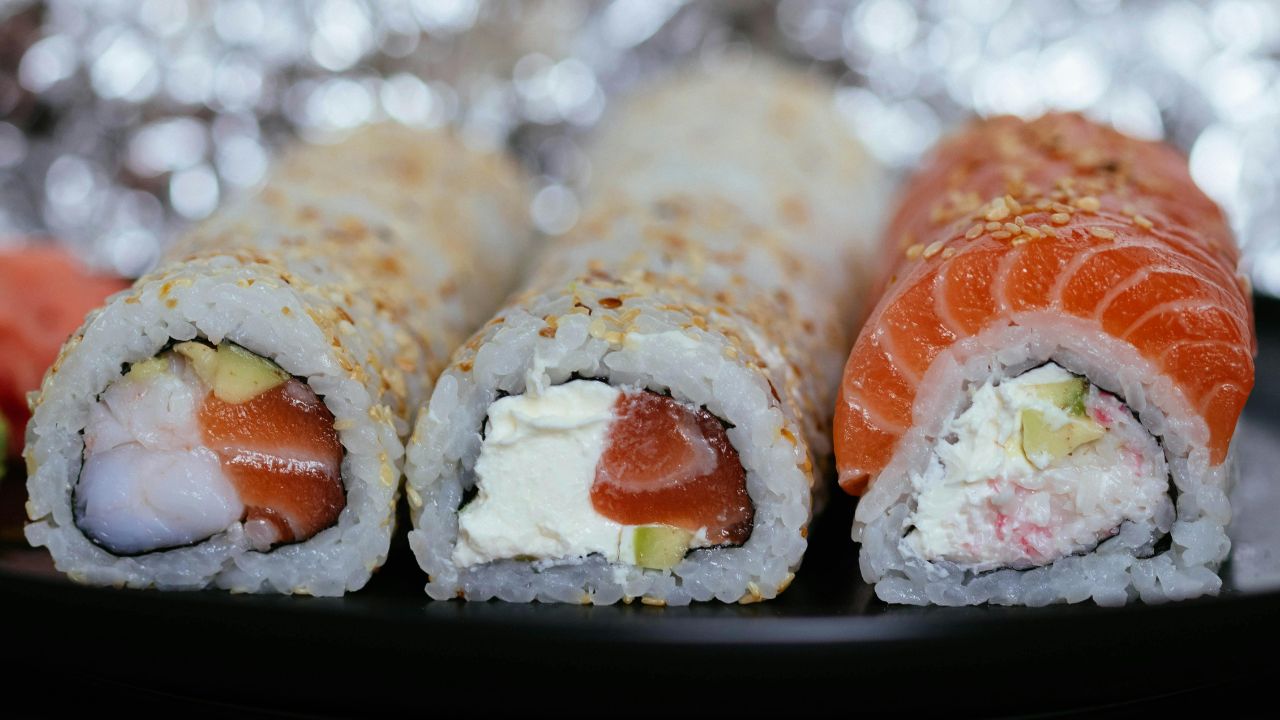Kosher for pesach sushi recipe no during Passover? You’re not the only one! You don’t have to give up your love of fresh fish, creamy avocado, and tangy nibbles just because chametz and kitniyot are off the menu. You can make kosher sushi for Passover, and it may be very tasty and filling. This book will show you all you need to know to produce beautiful, tasty sushi rolls in your own home that follow all of the Passover dietary rules. Forget about feeling deprived; let’s learn how to make delicious Passover sushi that honors the festival without losing taste or tradition. Get ready to wow your Seder table or have a special Pesach lunch!
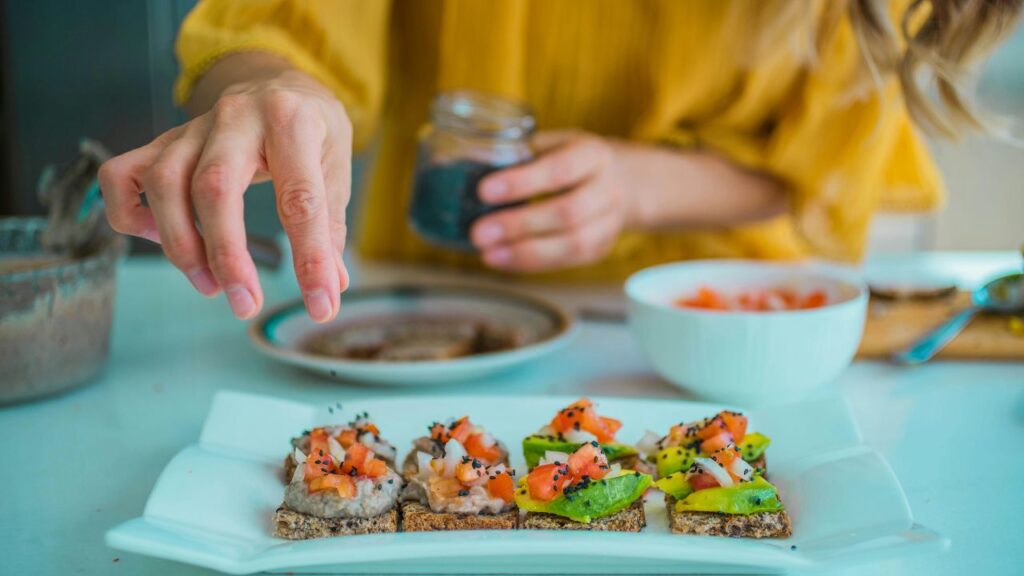
What Makes Sushi Kosher for Passover? Understanding the Rules
Kosher for pesach sushi recipe to make ordinary sushi kosher for Passover, you need to pay close attention to the components. The rice is the hardest part. Traditional sushi rice is cooked with vinegar, sugar, and salt, but the rice grain itself is chametz unless it has been certified Kosher for Passover, which is rare and often kitniyot for Ashkenazim. So, we need a basis that is good for Passover. Also, most soy sauce, teriyaki, and eel sauce include wheat and/or soybeans in it (kitniyot for Ashkenazim). You should also verify the fillings: imitation crab is not allowed, and you should check any pre-made sauces or marinades for grains or legumes that are not allowed. The fish must be kosher species (such tuna, salmon, or yellowtail) and prepared correctly. According to your minhag, every part of the meal, from the “rice” substitute to the dipping sauce, must be checked to make sure it is Kosher for Passover and does not contain chametz or kitniyot. It sounds strict, but you can do it with the appropriate changes!
Finding Your Perfect Passover “Rice”
You need to find an appropriate substitute for rice if you want to prepare sushi that is kosher for Passover. There are great choices, though! Quinoa is a great choice. Follow the package recommendations to cook it, then season it while it’s still warm with a mix of kosher for Passover vinegar, a little kosher for Passover sugar, and salt. Don’t rinse it after cooking, because it has to be sticky. Cauliflower rice is another popular option. Put raw cauliflower florets in a food processor and pulse them until they are the size of rice. To get rid of the moisture, sauté it for a short time with some oil and salt. Kosher for pesach sushi recipe then let it cool fully. Some people add a little mashed potato or a beaten egg to hold everything together. Sweet potato rice is a distinctive base that has a hint of sweetness. Experiment with different tastes and textures to see what you like most. Each one gives your Passover sushi rolls a different flavor.
Ensuring Kosher and Fresh Ingredients
For great sushi, you need fresh, high-quality fish. This is even more important for Passover sushi. You need to start with kosher seafood. Salmon, tuna (yellowfin or bigeye), yellowtail (hamachi), and snapper are all frequent sushi fish that are usually safe to eat. But you should always check with a reliable kosher fish list or your rabbi. The most crucial factor is that the fish is sashimi-grade or sushi-grade. This means that it was frozen at very low temperatures (31°F or lower for a specified amount of time) to kill parasites, thus it is safe to eat raw. When you buy fish, make sure to tell the fishmonger that you want it for raw consumption. When you prepare for Passover, be sure that there is no cross-contamination with chametz or kitniyot in the store. If you don’t like raw fish, you can make wonderful kosher for Passover sushi with fully cooked foods like kosher smoked salmon (lox), cooked shrimp, or even grilled kosher chicken or turkey.
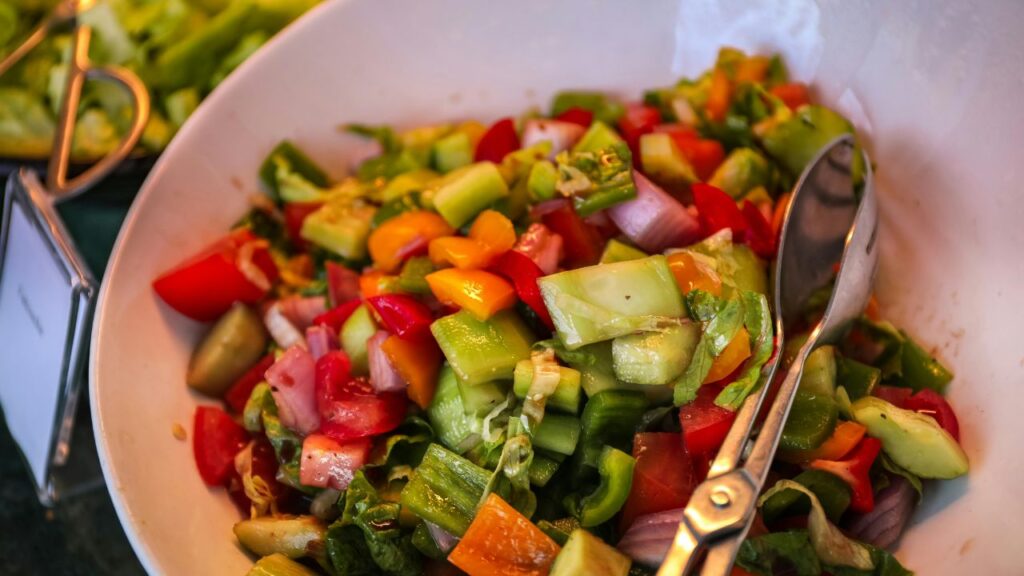
Colorful, Crunchy Passover-Friendly Fillings
You can really get creative with vegetables and add bright colors, delightful crunch, and fresh flavors to your kosher for Passover sushi. There are nearly too many options! Cucumber sliced into thin sticks and with the seeds taken out is a classic. Adding avocado (sliced just before rolling to keep it from browning) makes it creamy. Kosher for pesach sushi recipe asparagus spears that have been briefly blanched until they are tender-crisp are great. Carrot sticks add color and flavor. You can blanch or cut them very fine to make them more flexible. Cutting bell peppers (red, yellow, and orange) into thin strips makes them crispy and delicious. Scallions (green onions) are fantastic for adding flavor, but be sure to check them carefully for bugs. You can add kosher pickled ginger for Passover in little amounts within rolls to give them a tart kick. Sweet potato sticks that have been steamed add a hearty, sweet touch. You may make your Passover sushi dish more interesting by mixing and matching textures and flavors.
Mastering Technique with Passover Ingredients
The essential steps for rolling kosher for Passover sushi are the same as for regular sushi, although your “rice” alternative might work differently. You will need nori sheets that are kosher for Passover. Put a nori sheet, glossy side down, on a bamboo rolling mat that is gently wrapped with plastic wrap (to make cleanup easier and keep things from sticking). Spread your selected “rice” (quinoa, cauliflower, etc.) evenly over the nori, leaving approximately an inch of space at the top. Gently yet firmly press it down. Put your fillings (fish and veggies) in a line across the middle of the rice. Now, the roll: Lift the edge of the mat that is closest to you and fold it tightly over the fillings, tucking them in. Kosher for pesach sushi recipe keep rolling ahead, putting light pressure on the nori edge until you reach it. To seal the roll, wet the naked edge with a little water. Before cutting the roll, let it lay seam-side down for a minute.
Dipping and Drizzling Without Soy Sauce
The biggest flavor gap in kosher for Passover sushi is soy sauce, but don’t worry—there are tasty substitutes! Tamarind paste is a great basis. Look for tamarind concentrate or paste that is pure and kosher for Passover. Add a little water to it and season it well with kosher for Passover vinegar (cider or wine), kosher for Passover sugar (or honey/maple syrup), and a pinch of salt. Simmer for a short while to mix the flavors. It makes a sauce that tastes like duck sauce and is sweet and sour. To make balsamic glaze reduction, simmer kosher for Passover balsamic vinegar with a little sugar or honey until it thickens and becomes syrupy. It has a rich, layered sweetness. Citrus Ponzu-Style: Add a little sugar or honey, salt, and finely grated citrus zest to fresh lemon or lime juice and kosher for Passover vinegar. if you need to, add a little bit of water.

Creative Passover Sushi Styles
Don’t just eat maki rolls! There are numerous delicious ways to make kosher sushi for Passover. Hand Rolls (Temaki): These are really easy and entertaining to make. Just cut the nori sheets in half along the diagonal. Put a little bit of “rice” and fillings in the middle of the rough side, and then roll it up into a cone shape from the pointed end. Eat right away! Uramaki: Inside-Out Rolls This is harder with Passover “rice” because it might not be as sticky. It can work if you use quinoa. Put the “rice” on the nori, then carefully flip it over so the rice side is down on the plastic wrap on your mat. Put fillings on the nori side and roll it up as usual. You can put toasted quinoa flakes or finely chopped almonds on top of the rice if you desire.Poke-Style Sushi Bowls:
Serving Your Beautiful Passover Sushi
Kosher for pesach sushi recipe the way you present your kosher for Passover sushi makes it go from good to really outstanding. The Platter: Use a big, clean plate or a traditional bamboo sushi mat. Put your sliced rolls in a nice order, switching up the directions or standing some on edge to make them look more interesting. Fill in the gaps with small piles of kosher for Passover pickled ginger (check the labels!) and fresh grated Passover horseradish (as a condiment). Add some color with thin slices of lemon or lime, little edible flowers (like pansies, if you can find them and they are kosher), or extra-fine pieces of scallion greens or radish. Sauces: Put your homemade Passover dipping sauces in nice, pretty dishes or ramekins next to the platter. You may use a squeeze bottle to make sauces look nice on top of bowls. Chopsticks: Make sure you have a lot of disposable or reusable kosher for Passover chopsticks. If you’re setting the plate on a table for everyone to use, don’t forget to provide them with chopsticks or tongs.
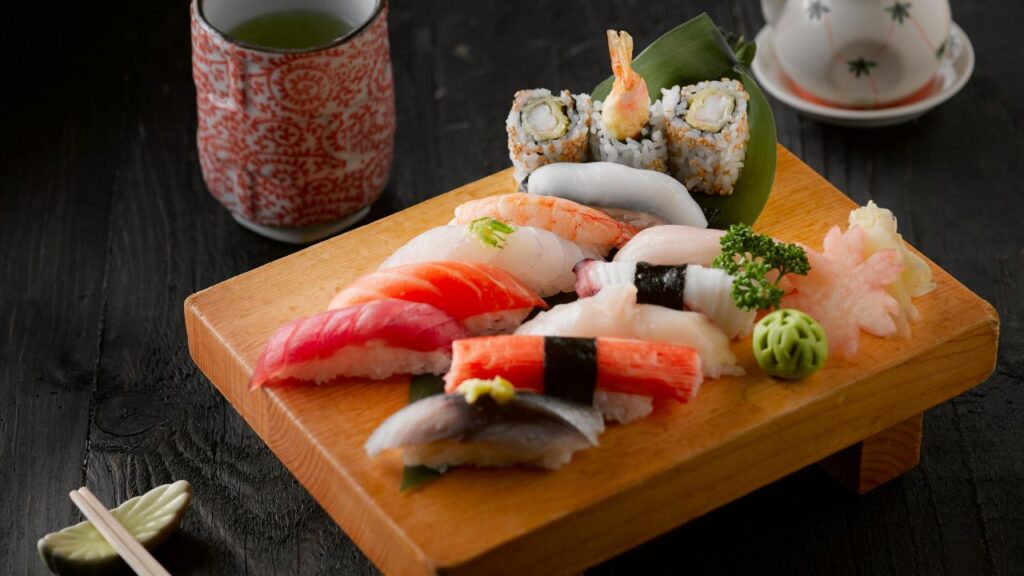
Storing Your Passover Sushi Creations
If you use raw fish, kosher for Passover sushi tastes best right after you make it. But if you have leftovers or need to be ready ahead of time, this is how to keep everything secure. With Raw Fish: You should eat sushi with raw fish within a few hours of making it, and it should stay cool until you serve it. Don’t let it out at room temperature for too long. It’s not a good idea to keep raw fish sushi overnight most of the time. Rolls containing veggies that have been cooked: It’s easier to maintain rolls that are made with cooked fish, smoked salmon, or just veggies. Put them in the fridge in an airtight container in a single layer. Eat them within 24 hours for optimal results. The nori will get softer with time. Tips for storage: Don’t stack rolls on top of each other because they can stick together and lose their shape.
Kosher Passover Sushi
| Ingredient Category | Quinoa Base 🌾 | Cauliflower Rice 🥦 | Sweet Potato Base 🍠 |
| Taste & Texture | Closest to rice (chewy, nutty)Holds shape well | Mild flavor (lets fillings shine)Can be watery if not drained | Naturally sweet & heartyFirm texture holds fillings |
| Prep Difficulty | Easy (cook like rice)Needs vinegar seasoning | Moderate (must drain thoroughly)Quick sauté essential | Longer prep (grate/steam)Stickier texture |
| Kitniyot Concern | ⚠️ Not for Ashkenazim(Often considered kitniyot) | ✅ Safe for all(No kitniyot issues) | ✅ Safe for all(Pareve friendly) |
| Best Pairings | Raw fish, avocado, cucumberClassic sushi flavors | Smoked salmon, asparagusLighter fillings | Cooked chicken, roasted peppersBold veggie combos |
| Passover Authenticity | Feels most traditionalRequires KFP vinegar | Modern low-carb optionMinimal seasoning needed | Creative grain-free solutionSweet contrast to fish |
| Fish/Style | Raw Fish Rolls 🐟 | Cooked/Smoked Rolls 🔥 | Veggie-Only Rolls 🥕 |
| Safety Level | Sushi-grade required(-31°F frozen) | No special handling(Pre-cooked/smoked) | Safest optionNo prep worries |
| Kosher Complexity | High (species + processing checks) | Medium (check smoke sources) | Simple (all produce) |
| Best Sauces | Tamarind glaze, citrus ponzu | Spicy KFP mayo, balsamic drizzle | Avocado crema, lemon-garlic dip |
| Shelf Life | 2 hours max (keep chilled!) | 24 hours refrigerated | 24 hours (nori softens) |
| Crowd Appeal | Impressive for Seder guests | Kid-friendly & familiar | Perfect for vegetarians |
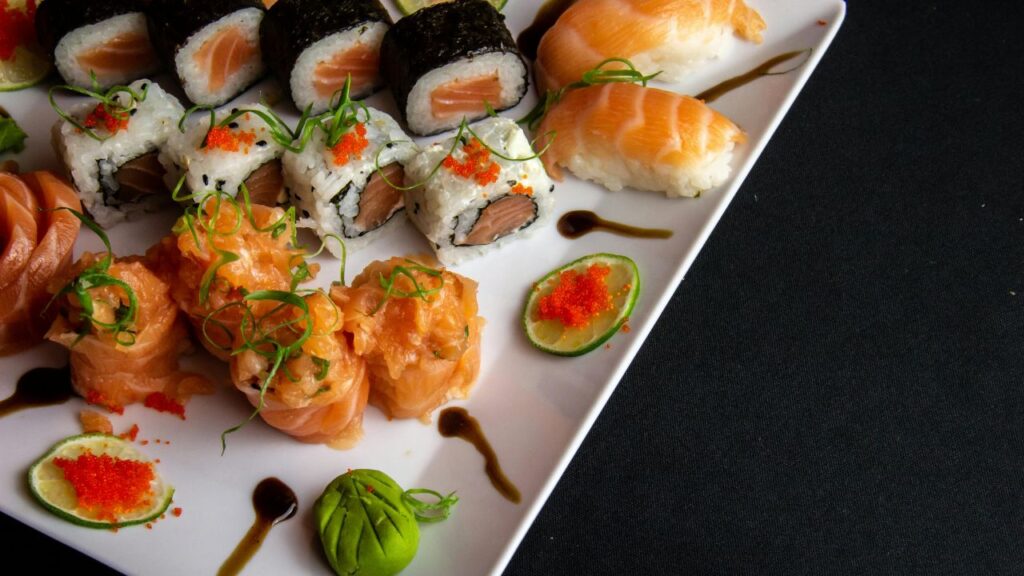
Embrace the Adventure Enjoying Sushi During Passover
Making kosher sushi for Passover is a wonderful opportunity to test new foods and flavors. It takes a lot of planning and changes, but the end result is a unique and delightful way to remember the event. It adds a little bit of excitement and class to your table and breaks up the usual Passover meals. Don’t attempt to get everything right on your first try. Instead, use fresh ingredients, test new flavors, and enjoy the process. This Passover sushi dish shows that kosher for Passover food can be trendy, diverse, and totally crave-worthy. Whether you’re making fancy rolls for your Seder or simple hand rolls for a light lunch, this recipe works. So get your certified ingredients, accept the challenge, and enjoy sushi throughout Pesach!
FAQ’s
1. Can I really make sushi without rice on Passover?
For sure!Instead of rice, try quinoa (cooked sticky-style), cauliflower rice, or sweet potato rice. Add KFP vinegar and sugar to give it that real sushi flavor!
2. What can I use instead of soy sauce?
You may also try a sour tamarind glaze (KFP tamarind + vinegar + honey) or a citrus ponzu (lemon juice + vinegar + honey). You can also use spicy KFP mayo!
3. Is raw fish safe for Passover sushi?
Only use frozen sushi-grade fish that has been frozen to kill parasites. Try cooked fillings like grilled chicken, smoked salmon, or roasted veggies if you’re not sure.
4. How do I stop my rolls from falling apart?
Don’t overfill the rice, and press it firmly onto the nori. To seal the nori edge, wet it. Let the rolls cool for five minutes before cutting them with a damp knife.
5. Can I prep this ahead of time?
Prepare the fillings and sauces the day before, but put them together on the day of the event (nori gets soggy!). You can store veggie rolls for 24 hours, but you should eat raw fish rolls within a few hours.
